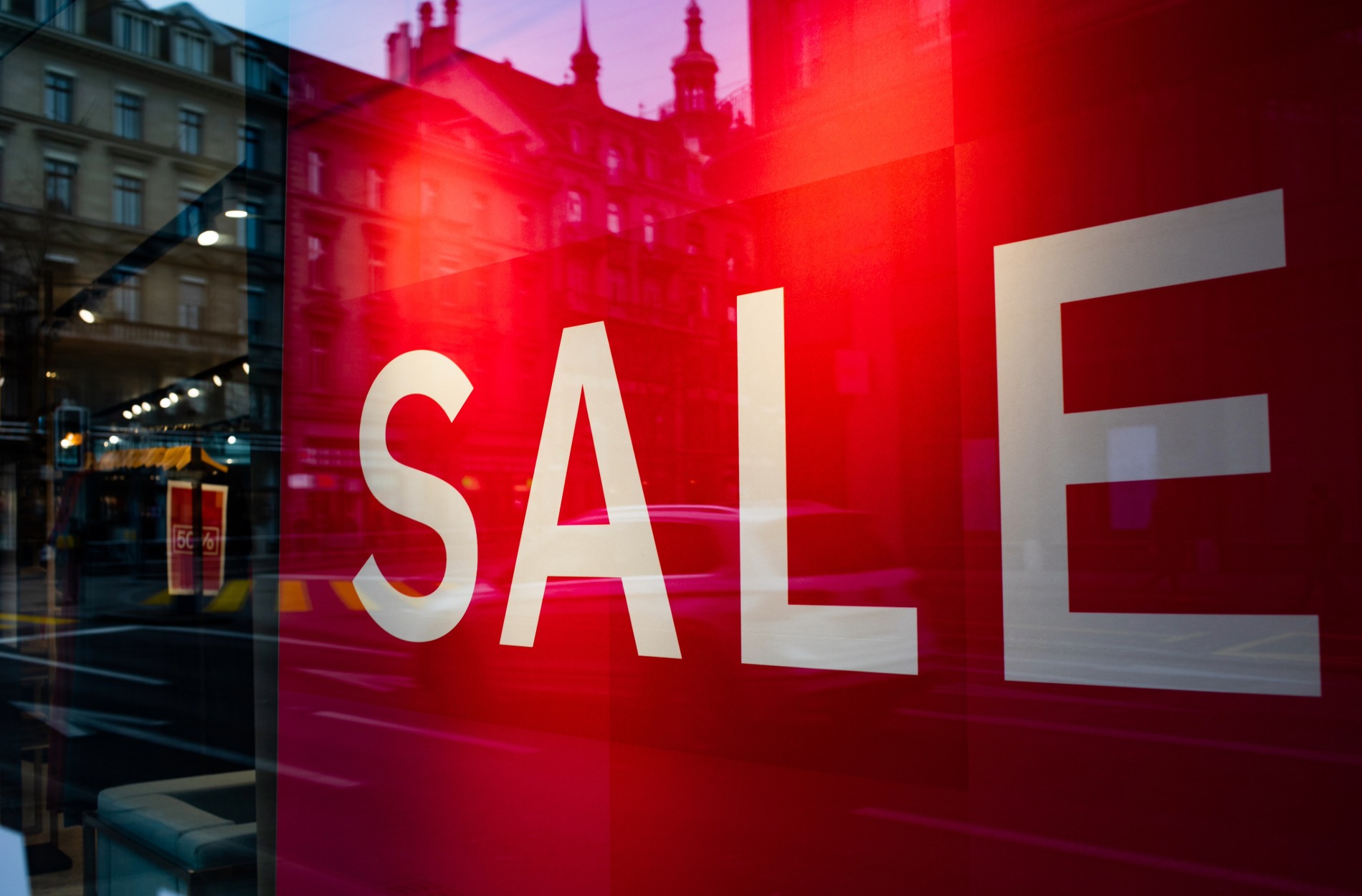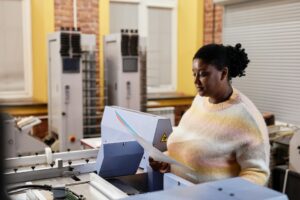Event signage does far more than add visual elements. It directs traffic, draws attention, and reinforces branding in quiet yet powerful ways. Whether you’re hosting a conference, trade show, music festival, or company retreat, good signage sets the tone and keeps everything running smoothly. Signs aren’t just decorations—they help your audience feel informed and confident in where they’re headed.
Imagine showing up at a bustling venue with no signage. You’d likely feel confused and frustrated. Now compare that to an event where signs clearly guide you from the parking lot to registration, then onto breakout sessions and exhibit areas. That level of ease doesn’t happen by chance. It comes from strategic planning with your goals and audience in mind.
Planning Your Event Signage
High-impact signage begins in the early stages of event planning. Thinking about signage after everything else is set can lead to missed opportunities and confusion. Starting early helps prioritize placement, align designs with the venue’s layout, and reduce last-minute changes.
Begin with the event location. Consider how foot traffic will flow and where signs will be most effective. Will attendees be entering through one main entrance? Are there side doors that need directionals? Think through their full journey—from arrival and check-in to keynote rooms or breakout spaces.
Match your signage to the event’s tone. For a laid-back outdoor celebration, bold colors and playful designs may be the right fit. For a corporate summit, you’ll want to stick with sharp lines and a clean, professional feel. The tone should reflect the purpose and personality of your brand as well.
Here are the main types of signage to plan for:
1. Directional Signs: Help attendees find their way around clearly and with confidence.
2. Informational Signage: Display key details like maps, agendas, safety instructions, and schedules.
3. Promotional Banners: Create excitement, showcase sponsors, and highlight primary areas.
4. Event Branding Displays: Reinforce your visual identity and make your event feel cohesive and polished.
Your audience matters too. A young, tech-savvy group is likely to appreciate QR codes and interactive elements. A more diverse or older audience may respond better to clear printed text and larger fonts. Your messaging style, font choice, and even the size of your signs should reflect who you’re talking to.
For example, if your annual meeting always has a busy check-in desk, a tall branded banner could help direct people from a distance. Add a floor decal or wall sign to reinforce the message. Suddenly, the traffic at your sign-in moves faster and smoother, saving staff time and improving the experience.
Designing Eye-Catching Signage
Once you know what you need, the next step is designing signs people will notice—and understand. A great design doesn’t mean flashy or loud. It means deliberate choices that highlight your message.
Start by keeping your colors and fonts consistent. Choose two to three complementary colors at most, ideally aligned with your company’s branding. Use one primary font (with bold or italic as needed) across all signs to keep things uniform and professional.
Make your key message large and legible from a distance. Wayfinding signage, in particular, should grab the eye and be readable in just a few seconds. Use high contrast between text and background so your words stand out even in bright or crowded settings.
Graphics can boost the look and feel of your signage but should never overwhelm the information. If imagery distracts from your message or confuses the viewer, it’s not serving your goal.
Key design tips to keep in mind:
1. Stick to clear, brief wording
2. Use high-contrast colors to stand out
3. Feature only one message per sign
4. Maintain brand consistency in all designs
5. Add logos in a balanced way that supports, not dominates, the design
Even tabletop signage benefits from good design. When styled well, a small sign can become a helpful and memorable part of your event experience.
Choosing the Right Materials for Signage
The material you choose affects how your signage looks and performs. Different events call for different materials, and the selection depends on location, duration, budget, and weather.
Vinyl is widely used thanks to its durability and ability to withstand outdoor conditions like wind and rain. It’s also lightweight, making it easy to transport and hang. For a classier touch at formal indoor events, fabric signs with rich texture can add warmth and a polished look. Metal signs might be the right choice when longevity and sturdiness matter most.
If your event is indoors, you’re looking more at appearance than weather resistance. You can opt for lighter or less weatherproof materials without sacrificing effectiveness. If your event is outside, you need materials that won’t lose color or crease in the elements.
Budget plays a part too. Fabric tends to be more expensive but can elevate the overall presentation, making it worth the extra cost for high-end events. Review your needs closely and choose material based on where it will be displayed and how long it needs to last.
Working with a Professional Printing Service
While handling signage in-house may sound cost-effective, working with a professional print service often pays off. A seasoned team produces higher quality visuals, stronger materials, and ensures everything matches your goals and brand.
That’s where BRIDGE® Printing & Promotional Products, Inc. can make a big difference.
Our services include:
– Business Printing
– Commercial Printing
– Signage & Banners
– BRIDGE® SUREPRINT® E-Commerce Solution
– Kitting Services
– Promotional Products & Apparel
– Fulfillment Services
From tailored business kits to complex promotional campaigns, BRIDGE® delivers everything needed for print success. Our full-service process covers planning, design, printing, and final delivery, so you’re not chasing down multiple vendors. We also ensure color accuracy, image sharpness, and consistent finishes across every item.
Plus, working with us means timelines and quality are taken seriously. You can trust your signage will arrive on time, look great, and reflect your brand in the best light.
Making Your Signage Work for You
Even the best-designed signs won’t help if no one sees them. Proper placement is just as important as good messaging. Signs should appear where people naturally look—entryways, eye level, near elevators, or along main walking paths. Avoid placing signs where they’ll be blocked by furniture or crowd flow.
Planning sign maintenance can make a difference too. Whether it’s double-checking stands or straightening table signs, checking throughout the event keeps your presentation sharp.
If you’re looking to add more interaction, consider using QR codes. They can direct users to a schedule, survey, or a digital program guide. A simple scan provides instant value and saves on printed materials, while also helping gather data on engagement.
Smart Signage Leads to Smoother Events
When signage is approached thoughtfully, it becomes a key reason your event runs successfully. From the planning stage to the final print, each step matters. Understand your space, know your audience, design with intention, choose your materials wisely, and partner with the right professionals.
Transform your event with seamless signage that guides your audience and enhances their entire experience. At BRIDGE® Printing & Promotional Products, Inc., we offer comprehensive solutions, including promotional printing services, to ensure your event signage is both impactful and on-brand.
Let us help you create a memorable event environment that strengthens your brand presence and engages your guests like never before. Ready to take your event to the next level? Partner with us today for expert design and printing support!






